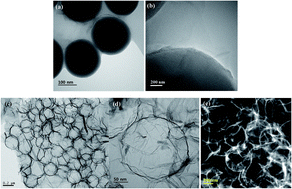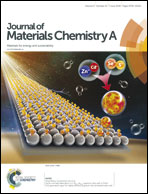Highly interconnected hollow graphene nanospheres as an advanced high energy and high power cathode for sodium metal batteries†
Abstract
Developing sodium based energy storage systems that retain high energy density at high power along with stable cycling is of paramount importance to meet the energy demands of next generation applications. This requires the development of electrodes beyond the conventional intercalation-based chemistry to overcome the sluggish diffusion-limited reaction kinetics and limited cycle life. Herein, we report a rationally designed hollow graphene nanosphere (HGS) cathode, which utilizes non-destructive, ultra-fast surface redox reactions at oxygen functional groups and delivers a discharge capacity of ∼155 mA h g−1 (0.1 A g−1) corresponding to a high energy of ∼415 W h kg−1 and retains ∼88 W h kg−1 of energy at a remarkable specific power of ∼84 kW kg−1 (40 A g−1), which are beyond the capabilities of intercalation-based electrodes. Moreover, the achieved cycling performance (86% capacity retention after 50 000 cycles at 10 A g−1) is the most stable cathode performance reported so far. The rationally designed sodium metal battery full cells with a sodium metal deposited aluminium current collector anode and the HGS cathode showed a similar sodium ion storage performance with high capacity, good rate capability, and stability. We certainly believe that the current research could direct the future research development towards transition metal-free, ultra-high power and super stable cathodes for sodium energy storage devices.



 Please wait while we load your content...
Please wait while we load your content...